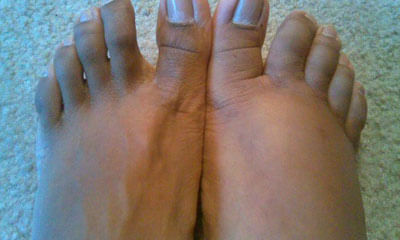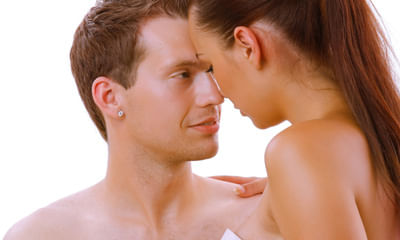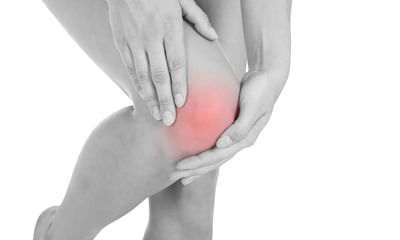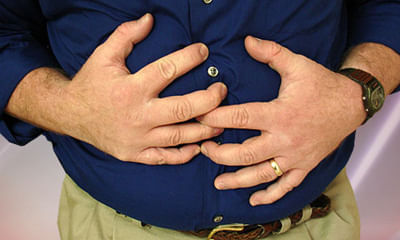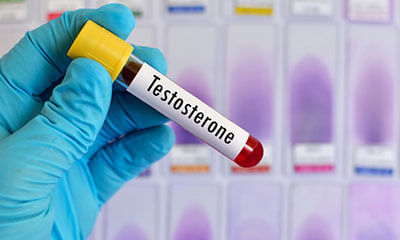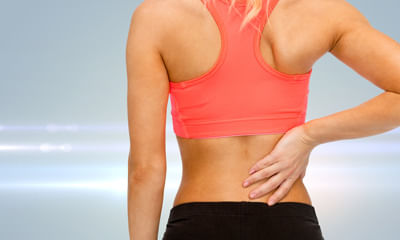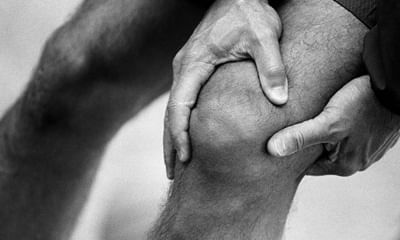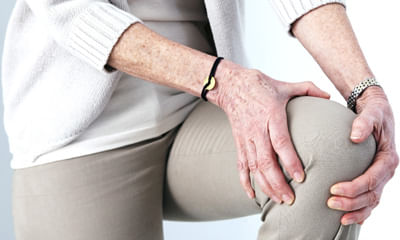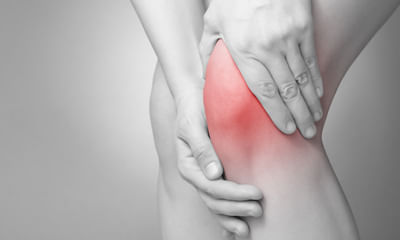Inflammation Of Veins In Leg
Edema problem on right leg and creatinine 1.5 with slow pitting and reddish swelling. ...
Ask Free Question
Edema in the right leg with associated symptoms like slow pitting and reddish swelling, coupled with a creatinine level of 1.5, can be indicative of underlying health issues that need medical attention. Here's a brief overview of what these symptoms might mean: edema: edema refers to swelling caused by excess fluid trapped in your body's tissues. In the legs, it can be due to a variety of reasons, including venous insufficiency, lymphatic issues, or other localized problems. Pitting edema: if the swelling leaves an indent when you press on it (known as pitting), this can be a sign of certain types of fluid retention, often related to circulatory or lymphatic system issues. Reddish swelling: redness and warmth in the swollen area could indicate inflammation or infection. It could also suggest a blood clot, especially if it's localized to one leg. Elevated creatinine levels: a creatinine level of 1.5 is higher than normal for most adults, suggesting impaired kidney function. The kidneys are responsible for filtering waste products from your blood and maintaining fluid balance. Impaired kidney function can lead to fluid retention and edema. Given these symptoms, it's important to seek medical evaluation as soon as possible. The combination of edema, changes in skin color, and elevated creatinine levels can point to significant health issues like kidney disease, deep vein thrombosis, or other circulatory system disorders. A healthcare provider can conduct the necessary examinations and tests, such as blood tests, doppler ultrasound, or other imaging studies, to determine the underlying cause and appropriate treatment. In the meantime, here are some general measures that might help manage symptoms: elevate the leg: keeping the leg elevated above heart level when possible can help reduce swelling. Compression stockings: these can aid in reducing swelling and improving blood flow. Stay hydrated: proper hydration can help kidney function and reduce the risk of blood clots. Limit salt intake: excess salt can contribute to fluid retention. Avoid prolonged standing or sitting: moving around regularly can help with circulation.
Hi doctor's, my scrotum are sagging from past 1 year and a thick, lumpy discharge is forming I keep cleaning everyday bu ...
Ask Free Question
There can be various reasons for sagging of the scrotum and the presence of a thick, lumpy discharge. Some possible causes include: 1. Testicular atrophy: this refers to the shrinking of the testicles, which can lead to sagging of the scrotum. Testicular atrophy can be caused by factors such as hormonal imbalances, certain medications, infections, or underlying medical conditions. 2. Epididymitis: this is the inflammation of the epididymis, a coiled tube located behind each testicle that stores and carries sperm. Epididymitis can cause swelling, pain, and a thick discharge from the penis. It is commonly caused by bacterial infections, but can also be due to viral infections or other factors. 3. Hydrocele: a hydrocele occurs when fluid accumulates in the sac around the testicle, causing swelling and sagging of the scrotum. While hydroceles are usually painless, they can sometimes be associated with discomfort or a heavy feeling in the scrotum. 4. Sexually transmitted infections (stis): certain stis like gonorrhea or chlamydia can cause symptoms such as discharge from the penis and discomfort in the scrotum. It is important to get tested if you suspect an sti as they require proper medical treatment. 5. Varicocele: this condition involves enlarged veins within the scrotum, similar to varicose veins in the legs. Varicoceles can cause sagging of the scrotum and may be associated with discomfort or pain. 6. Other factors: there are other potential causes for scrotal sagging and discharge, including skin infections, allergies, dermatitis, or even certain types of cancer. However, these are less common and would require a thorough evaluation. Given the complexity of your symptoms, it is crucial to seek medical attention. You can consult me to conduct a physical examination, review your medical history, and may order additional tests such as blood test, urine analysis.
I am 56 year old female in teaching profession. From past 2 months I am having leg pain and doctors diagnosed as varicos ...
Ask Free Question
Follow these herbal combinations for complete cure ras raj ras 1 tablet twice a day ashta moorti avleh 10 gm twice a day.
Last year in october, I was given an injection, on the right buttock, as my bp was very low. After a while, light pain a ...
Ask Free Question
How old are you do you have any varicose vein problem or do you have any back pain? Try keeping ice in the area where you have pain you might feel better. If not get back to us we will give you some suggestions. This is a general knee pain and for this you can follow these measures: one keep a pillow right under the knee while sleeping, next is you can keep ice in the painful area for about 5--10 minutes, it looks like you are is important to check that. Anaemia always leads to the symptoms of being tired and also having body pain though there may not be any pathological reasons for knee pain. With knee exercises you will definitely feel better and muscles must be strengthened.•don't play through pain. As soon as you notice exercise-related knee pain, ice the area and rest. Until your knee is pain-free, avoid activities that put stress on your patellar tendon. •strengthen your muscles. Strong thigh muscles are better able to handle the stresses that can cause patellar tendinitis. Eccentric exercises, which involve lowering your leg very slowly after extending your knee, are particularly helpful. •improve your technique. To be sure you're using your body correctly, consider taking lessons or getting professional instructions when starting a new sport or using exercise equipment. •therapy •a variety of physical therapy techniques can help reduce the symptoms associated with patellar tendinitis, including back pain it looks like you are anaemic. If you have back pain after you sit for long hours then it is due to your haemoglobin levels as it is important to check that. Anaemia always leads to the symptoms of being tired and also having back / leg pain though there may not be any pathological reasons for back pain. It looks like you are anaemic. And also you have to check with your vitamin and calcium, if the bones are weak then automatically the pain gets triggered more as there is less severity of the pain be strengthened1. Resisted terminal knee extension: make a loop with a piece of elastic tubing by tying a knot in both ends. Close the knot in a door at knee height. Step into the loop with your injured leg so the tubing is around the back of your knee. Lift the other foot off the ground and hold onto a chair for balance, if needed. Bend the knee with tubing about 45 degrees. Slowly straighten your leg, keeping your thigh muscle tight as you do this. Repeat 15 times. Do 2 sets of 15. If you need an easier way to do this, stand on both legs for better support while you do the exercise. 2•standing calf stretch: stand facing a wall with your hands on the wall at about eye level. Keep as arthritis is very common that you get generally bilaterally. Ice therapy would definitely help to reduce the inflammation. We also advise you to use knee cap which would help to prevent the knee from damaging further and also to maintain the quadriceps muscle tone •stretching exercises. Regular, steady stretching exercises can reduce muscle spasm and help lengthen the muscle-tendon unit. Don't bounce during your stretch. 3•strengthening exercises. Weak thigh muscles contribute to the strain on your patellar tendon. Exercises that involve lowering your leg very slowly after extending it can be particularly helpful, as can exercises that strengthen all of the leg muscles in combination, such as a leg press.•this is a general knee pain and for this you can follow these measures: one keep a pillow right under the knee while sleeping, next is you can keep ice in the painful area for about 5--10 minutes, it looks like you are is important to check that. Anaemia always leads to the symptoms of being tired and also having body pain though there may not be any pathological reasons for knee pain. With knee exercises you will definitely feel better and muscles must be strengthened.
My uncle has a dvt (since oct 2022) in his right leg near the knee. He is currently being treated with warfarin. He star ...
Ask Free Question
Hello, please get it checked by a physician nearby and get the medications. He might have an infected skin lesion which might need immediate attention. Also,it is necessary to monitor the coagulation profile regularly with the help of blood investigation.
In one testicle part feeling pain and size change of one testicle not too pain what I have do. ...
Ask Free Question
If your left testicle hurts, it’s important to know some of the more common causes, their symptoms, and some treatment options that your doctor may discuss with you. 1. Varicoceles you have arteries throughout your body that deliver oxygen-rich blood from the heart to bones, tissue, and organs. You also have veins that carry oxygen-depleted blood back to the heart and lungs. When a vein in a testicle becomes enlarged, it’s called a varicocele. Varicoceles affect up to 15 percent of males. Like varicose veins in your legs, varicoceles may appear bulgy under the skin of your scrotum. They tend to form in the left testicle because the vein on the left side hangs lower. This makes it a little more difficult for the valves in that vein to keep pushing blood up into the body. Treatment you may not need treatment for a varicocele, though if it’s causing you pain or fertility problems, then you should discuss treatment options with a urologist. Surgery can close off blood flow in the enlarged part of the affected vein and reroute it through other veins. Surgery is usually successful in eliminating pain and allowing for healthy testicle function. Fewer than 1 in 10 surgical patients have recurring varicoceles. 2. Orchitis orchitis is inflammation of the testicles, usually triggered by a virus or bacterial infection. Pain may start in the left or right testicle and remain there or spread throughout the scrotum. In addition to pain, the scrotum may swell and turn warm. The skin may turn reddish, and the scrotum may feel firmer or more tender than usual. The mumps virus is often the cause of orchitis. If that is the case, then symptoms in the scrotum may not appear for up to a week. Sexually transmitted infections (stis), such as gonorrhea, or a urinary tract infection may also lead to orchitis. Treatment treatment options for orchitis depend on its underlying cause. A bacterial infection can be treated with antibiotics. A virus, such as the mumps, usually just needs time to resolve itself. Over-the-counter pain medications may help ease your symptoms. 3. Spermatocele a spermatocele is a cyst or fluid-filled sac that forms in the tube that carries sperm from the upper part of a testicle. A spermatocele can develop in either testicle. If the cyst remains small, you may never have any symptoms. If it grows, that testicle may hurt and feel heavy. You may notice a change in the affected testicle during a self-exam. If you do, you should see your doctor. It’s unknown why spermatoceles form. If you have no symptoms, you may not need any treatment. Treatment if you’re experiencing pain and discomfort, a surgical procedure called a spermatocelectomy can remove the cyst. The operation does carry the risk of affecting fertility, so in some cases, men are advised to wait until they are done having children before undergoing the procedure. 4. Testicular torsion considered a medical emergency, testicular torsion occurs when the spermatic cord becomes twisted in the testicle, cutting off its blood supply. The spermatic cord is a tube that helps support the testicles in the scrotum. If the condition isn’t treated within six hours, a man could lose the affected testicle. Testicular torsion is somewhat unusual, affecting about 1 in 4,000 young men. One of the most common causes of testicular torsion is a condition called “bell clapper” deformity. Instead of having a spermatic cord that holds the testicles firmly in place, someone born with bell clapper deformity has a cord that allows the testicles to move more freely. This means the cord can be more easily twisted. Testicular torsion usually affects only one testicle, with the left testicle being the most common. The pain usually comes on suddenly and with swelling. Treatment testicular torsion must be treated surgically, though an emergency room doctor may be able to temporarily untwist the cord by hand. An operation involves securing the testicle with sutures to the inner wall of the scrotum to avoid future twisting. If bell clapper deformity is diagnosed, the surgeon may secure the other testicle to the scrotum even if there’s been no torsion. 5. Hydrocele inside the scrotum, a thin layer of tissue surrounds each testicle. When fluid or blood fills this sheath, the condition is called a hydrocele. Usually the scrotum will swell, and there may or may not be pain. A hydrocele can develop around one or both testicles. A hydrocele is more common in infants and tends to resolve itself within a year or so after birth. But inflammation or injury can cause a hydrocele to form in older boys and men. Treatment surgery may be needed to remove the hydrocele. You may need to have fluid or blood drained from around the testicle after the operation, which is called a hydrocelectomy. Follow-up appointments and self-exams are recommended, as a hydrocele can form again, regards Dr. Ms. haque.
I am 52 years old and have been experiencing immense pain if I sit down with legs folded for even 5 mins. Also I have no ...
Ask Free Question
It might be due to varicose veins inflammation or it might be due to ligament injury in the knee. The conservative management would be to keep ice in that inflamed area during one time in a day and to wear either knee cap or varicose veins stockings.
My father is 48 years old, he is suffering from pain in his knees and his uric acid is always increasing and there is so ...
Ask Free Question
U should do-- watch your weight. Eat fresh fruit, vegetables, whole wheat products and some pulses (high in purine) every day. Enjoy low-fat milk and dairy products daily. Drink plenty of fluids. Avoid alcoholelevate your affected foot if you smoke, then stop it. Add more fiber to your diet. Eat more fruits, vegetables and whole grains, which provide complex carbohydrates. Avoid foods and beverages with high-fructose corn syrup, and limit consumption of naturally sweet fruit juices. Good sources of low-purine nuts and seeds include walnuts, almonds, flaxseeds and cashew nuts. U can take one handful of these nuts (mixed) everyday curd is very good for u. Homeopathic treatment has very encouraging results. Consult online for details.
My has knee osteoarthritis she is around 50 years of age. She is not able to move even one footstep. She does her work w ...
Ask Free Question
Symptoms of osteoarthritis may include joint pain and progressive stiffness that develops gradually. Symptoms of may include painful swelling, inflammation, and stiffness in the fingers, arms, legs, and wrists occurring in the same joints on both sides of the body, especially upon awakening. Unable to walk properly feeling like a vein got stretch in right leg mostly in knee without any pain. It might be due to varicose veins inflammation or it might be due to ligament injury in the knee. The conservative management would be to keep ice in that inflamed area during one time in a day and to wear either knee cap or varicose veins stockings knee pain, when leg folding time get pain. This must be due to your muscular strain and posture and it may not be due to any other reasons. It is better to correct your addictive behaviour by consulting the right physician. For the time being for the back pain, apply ice.Neck tilt: from the sitting position, tilt your head down so your chin touches your chest. Hold this position for 5 second s. Return to the starting position and repeat. Do this five times. Side-to-side neck tilt. From the same starting position, tilt you neck toward one shoulder, leading with your ear. Hold for 5 seconds and then return to the starting position. Do this five times on each side. Neck turn. Look straight ahead, then turn your head to one side, keeping your chin at the same level. Do this five times on each side. Neck stretch. Holding the rest of your body straight, push your chin forward, stretching your throat. Hold for 5 seconds. From the same starting position, push your chin backward and hold for 5 seconds. Do the forward and backward stretch five times each. If any of these exercises cause severe pain or weakness in your hands or arms, stop right away and talk with your doctor.
Hey I am 23 years old and I have knee corner pain and pain where leg meets body and swelling at the back of the knee and ...
Ask Free Question
Are you obese? If you are obese then it can be corrected by reducing the body weight especially in the hip, waist and thighs. However the tonification of the body also will improve to greater extent to reduce the rubbing of both the thighs. You can do ice therapy which will definitely help to reduce the inflammation. The burning sensation from hip to foot can be due to various reasons especially concerned with lack of blood ciruculation or due to compression of the veins or capillaries. Try out and let us know. For the time being you can try hotwater fermentation which will help you to get reduced with the burning sensation of the foot.

